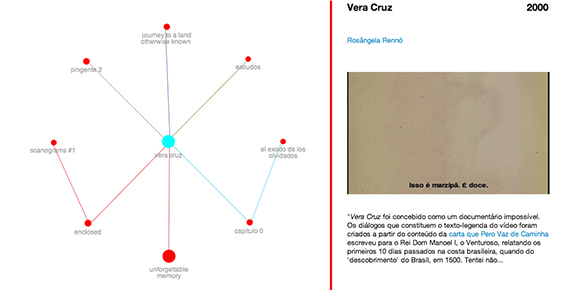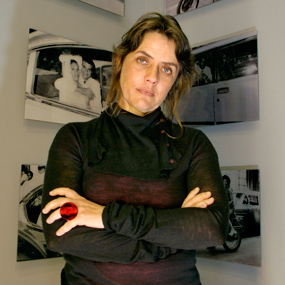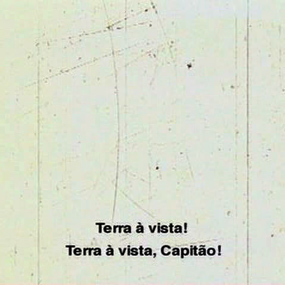Rosângela Rennó
One of the most renowned Brazilian contemporary artists, Rosângela Rennó conducts an in-depth investigation on the nature of image through the appropriation of documental and photography archives. Daniela Bousso, the curator who wrote an essay on the artist for FF>>Dossier 29, describes Rennó’s work as a living archive of sorts: “archive as a source from which to retrieve memory, for the construction of history and as a strategy for fighting amnesia.” Her work is a part of major public collections, such as those of Museo Nacional de Arte Reina Sofia (Madrid, Spain), the Guggenheim Museum (New York, USA), Tate (London, United Kingdom) and Centre Pompidou (Paris, France), and has been featured in the biennials of Moscow (2011), Istanbul (2011), São Paulo (2011, 1998 and 1994), Mercosur (2009 and 1997) and Venice (2003 and 1993).
Canal VB: Rosângela Rennó fala sobre Vera Cruz durante o 13º Festival (2001)
Since she is deeply interested in visual intertextuality and the expansion of photographic image, it is a natural progression for Rosângela Rennó to advance her research toward image in motion, as the curator, art critic and journalist Paula Azulgaray points out: “experimentation with cinema is also an inherent condition to the artist’s work.” In 2000, she creates Vera Cruz, her first video piece. Like other works by Rennó, Vera Cruz is based on the questioning and reinvention of our approach towards history. “History is always anchored on documents. However, any investigation based on ancient documents and remainders from a time long past is bound to contain gaps. Isn’t history revised and expanded all the time?,” the artist inquires in her collaboration to PLATFORM:VB.
Vera Cruz is an impossible documentary about the discovery of Brazil. “The video is based on impossibilities: of the documentary itself and of dialogue between the Portuguese and the Indians at the moment of discovery,” says the artist, who used descriptive elements from Pero Vaz de Caminha’s letter to create the unfeasible audio-visual register of the arrival of Portuguese colonizers in Brazil and their first contact with the natives. The simulated wear on the film is supposedly testimony to the action of time upon this fiction-documentary, of which all that is left is the sounds of nature and speech, in the form of subtitles – the absence of image allows for a narrative opening, and the wealth of details described piques the viewer’s imagination.
Presented (and awarded) at the Festival's 13th edition, Vera Cruz was made for the Brazil + 500 – Rediscovery Exhibition (São Paulo Biennial Foundation, São Paulo, 2000).
Learn more about the artist:




